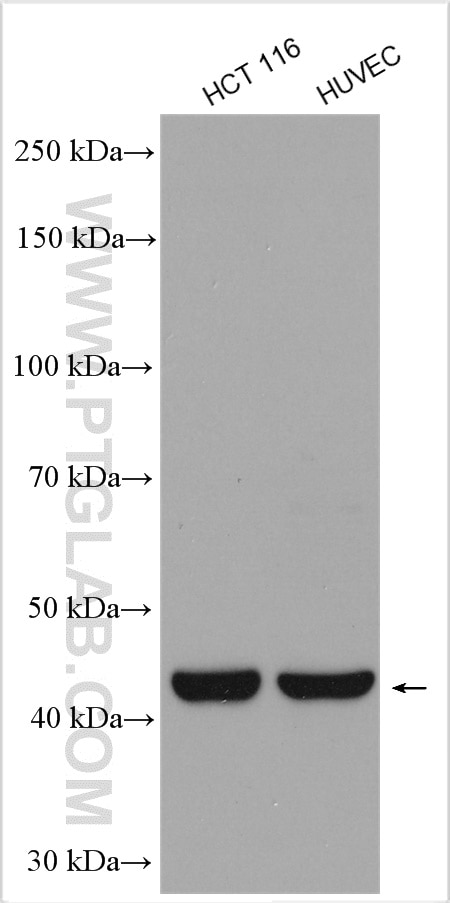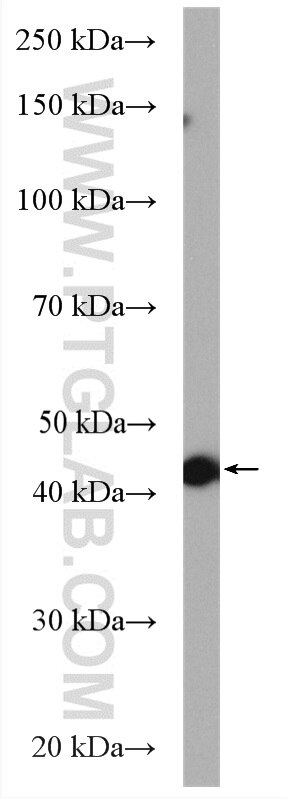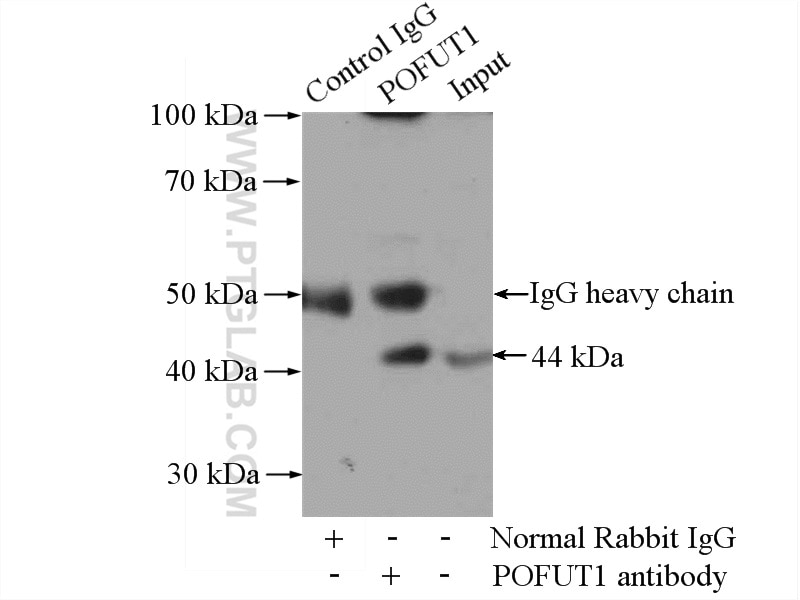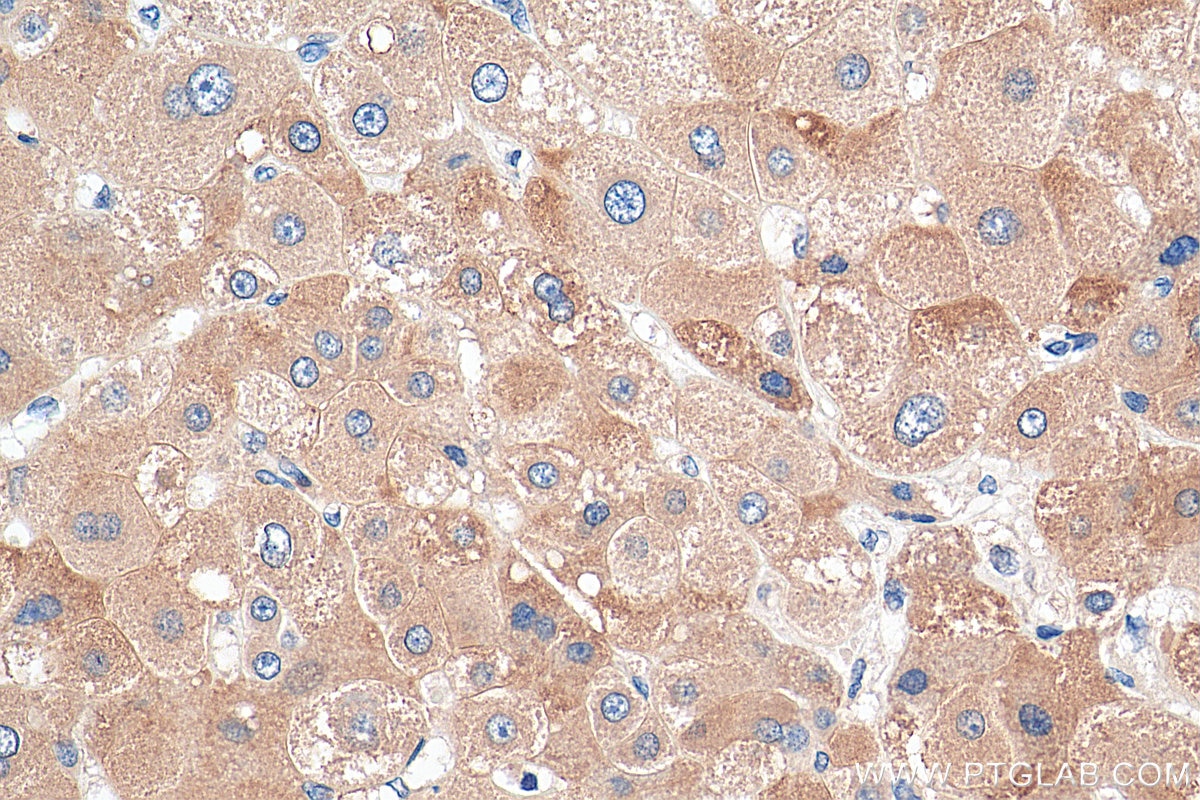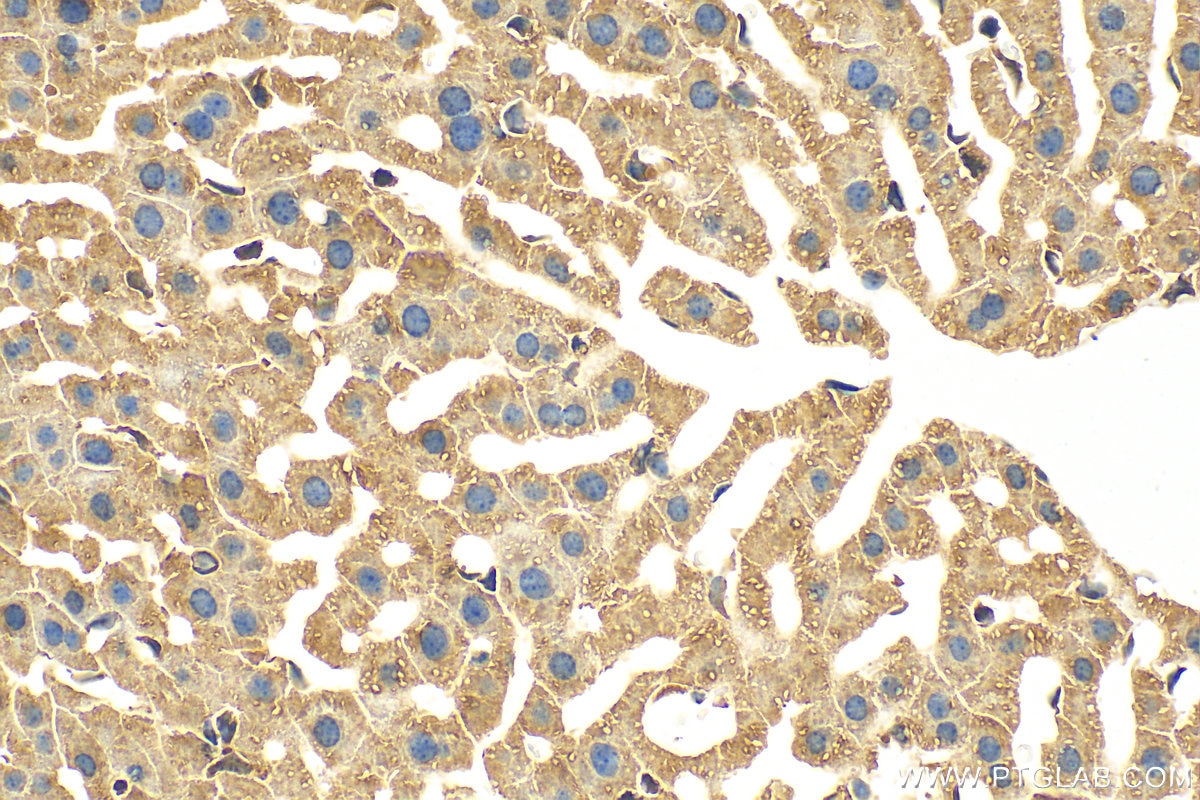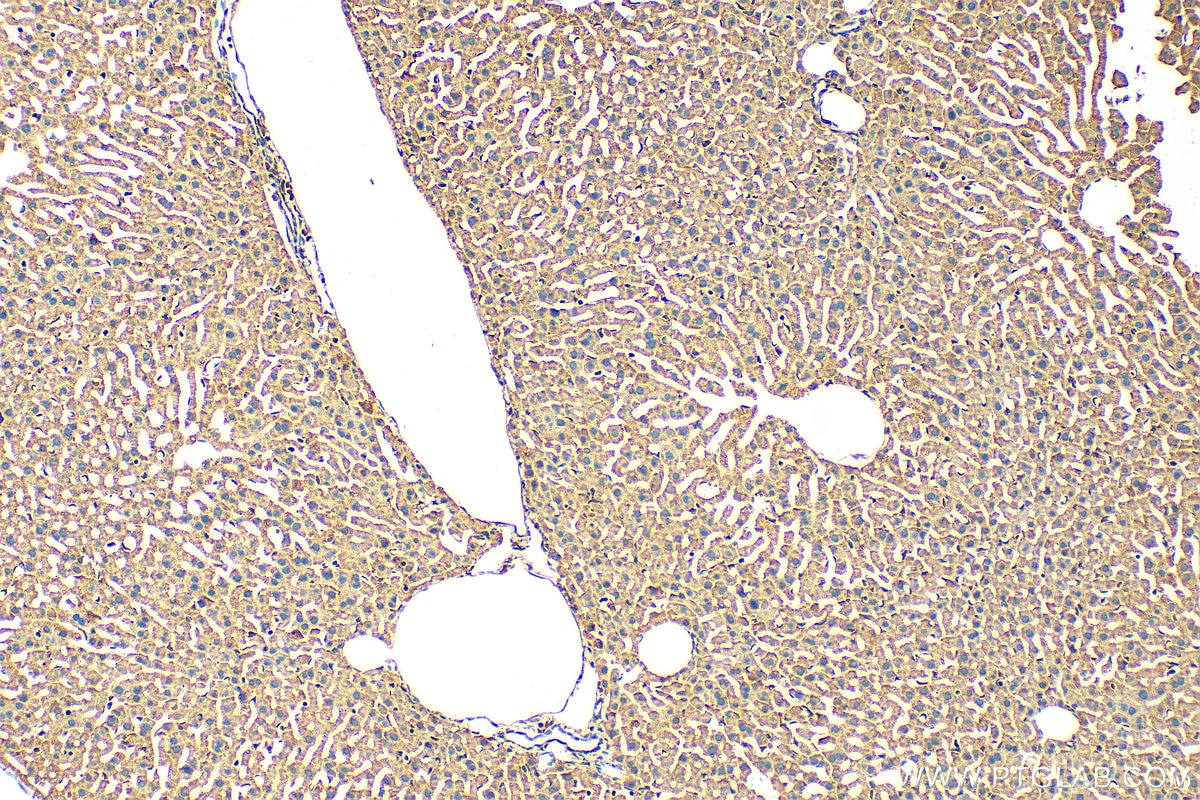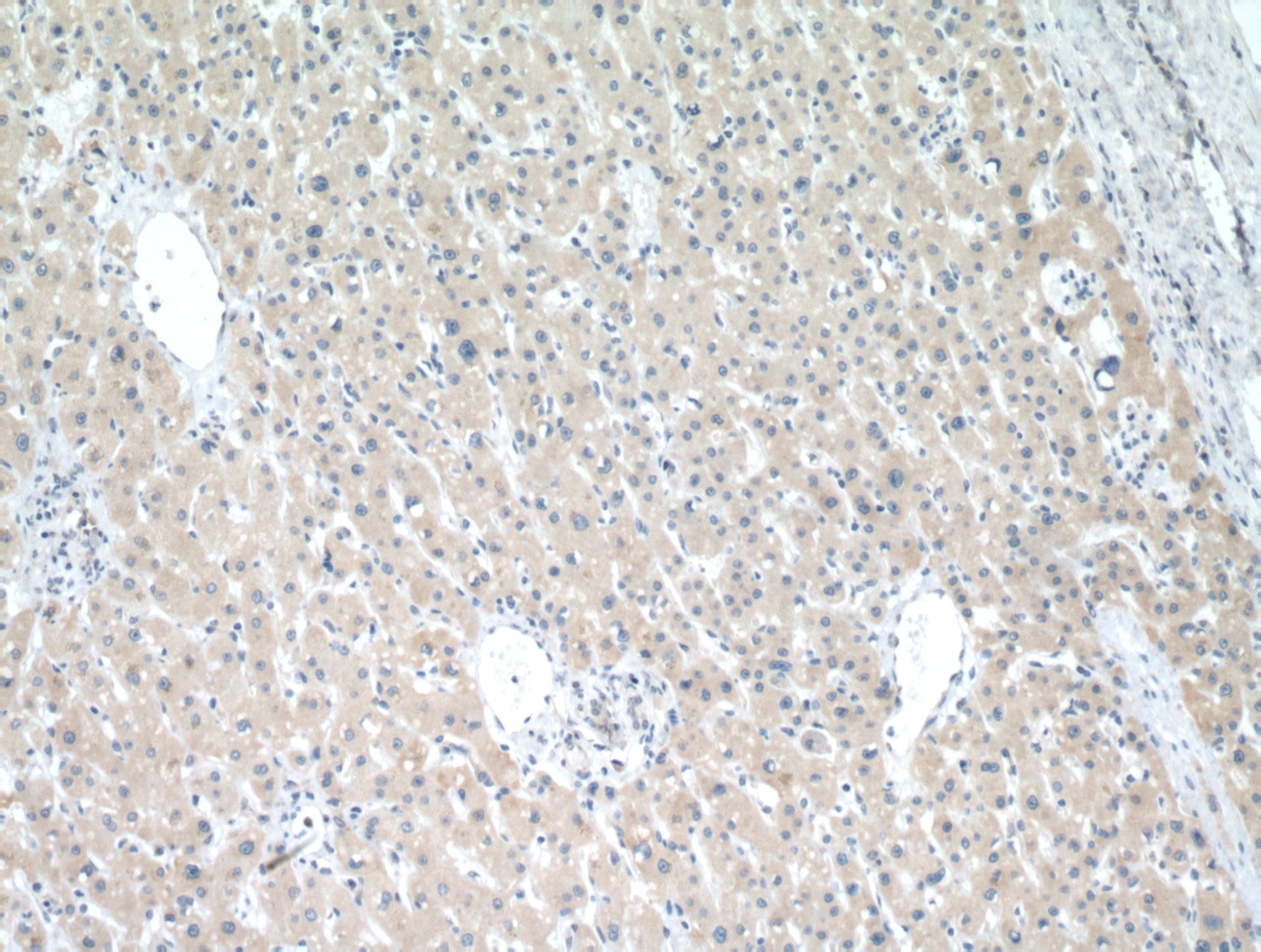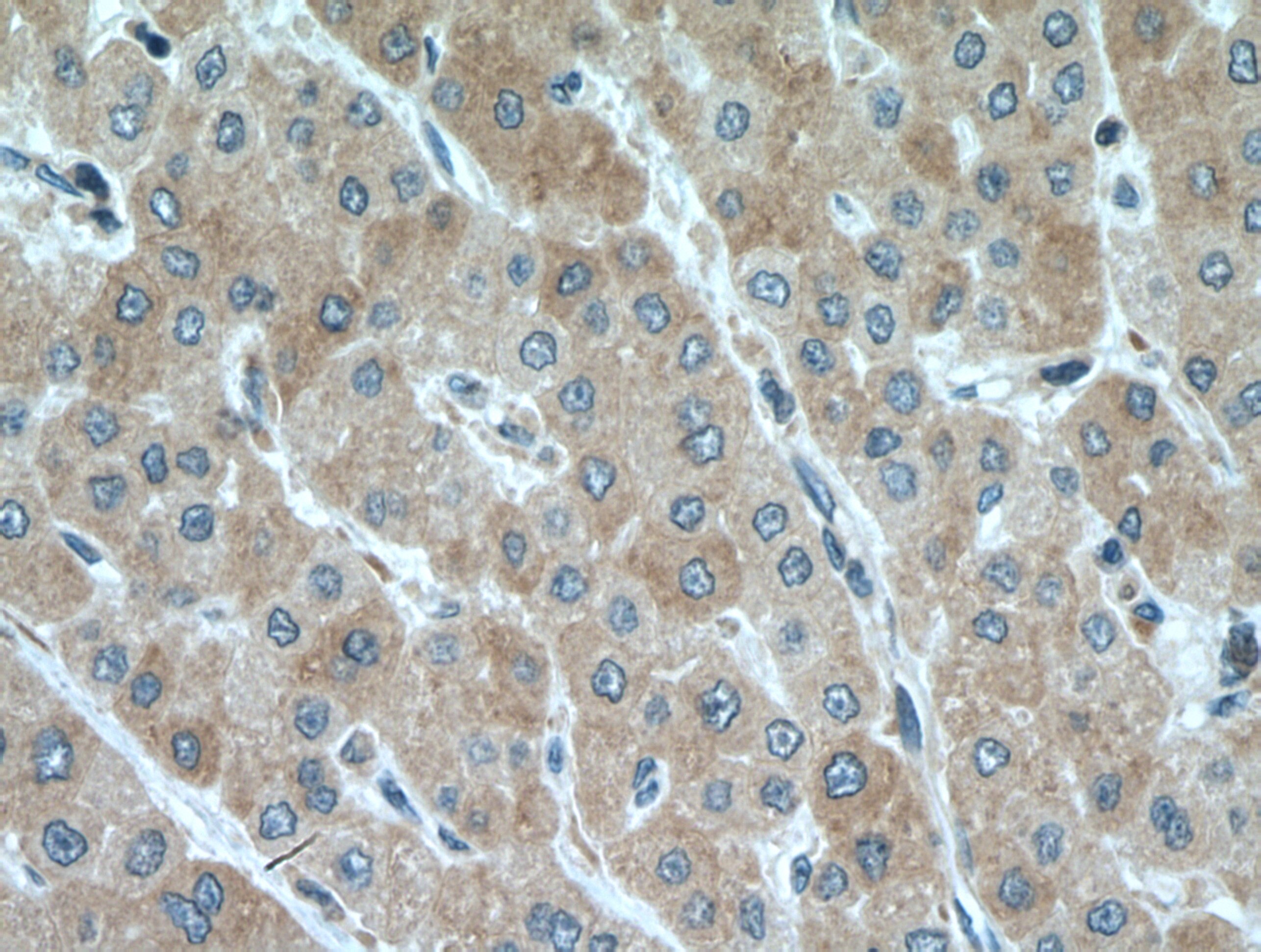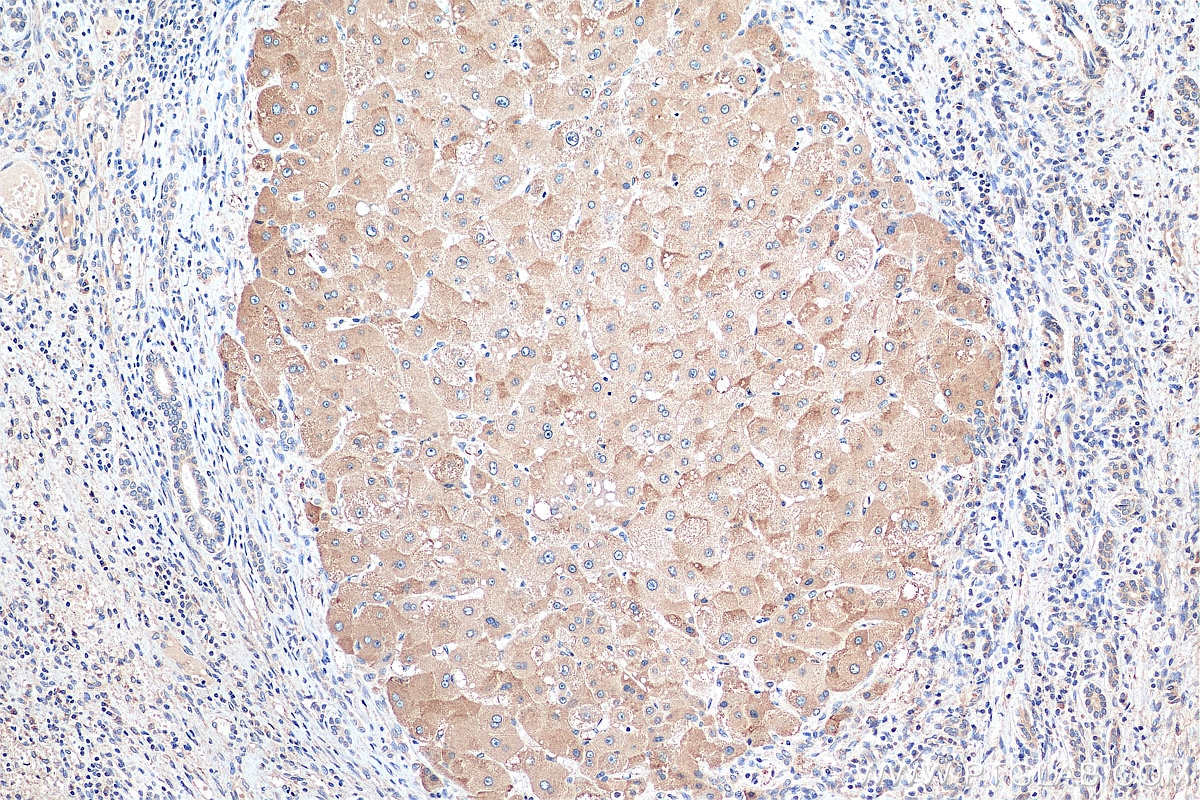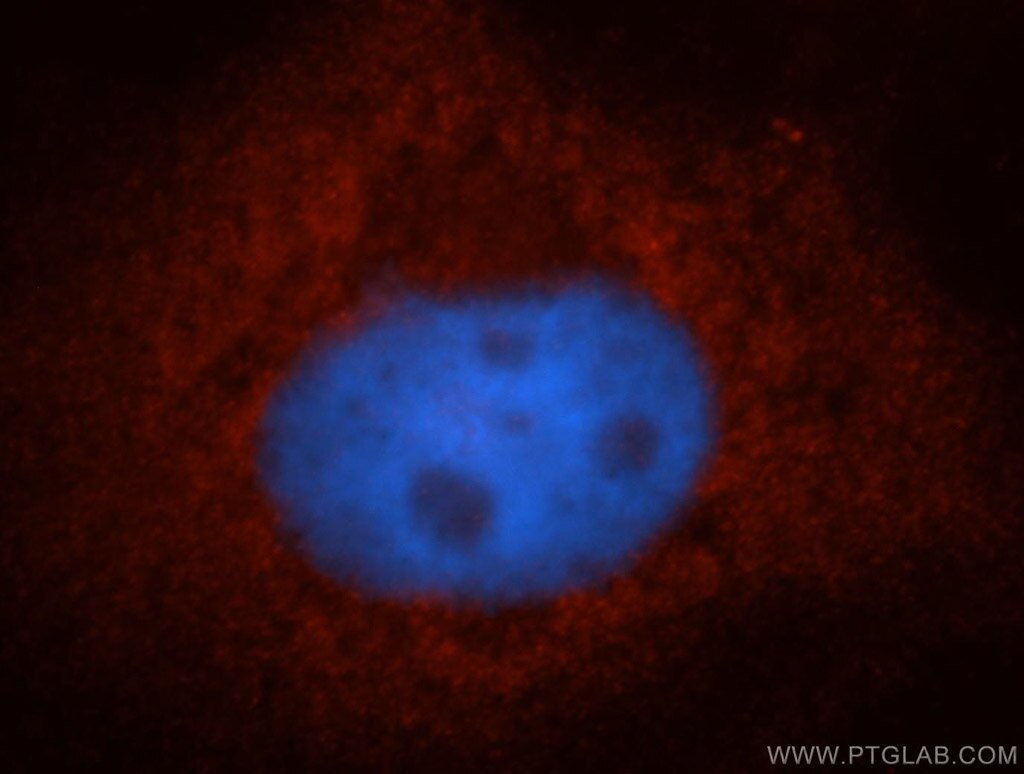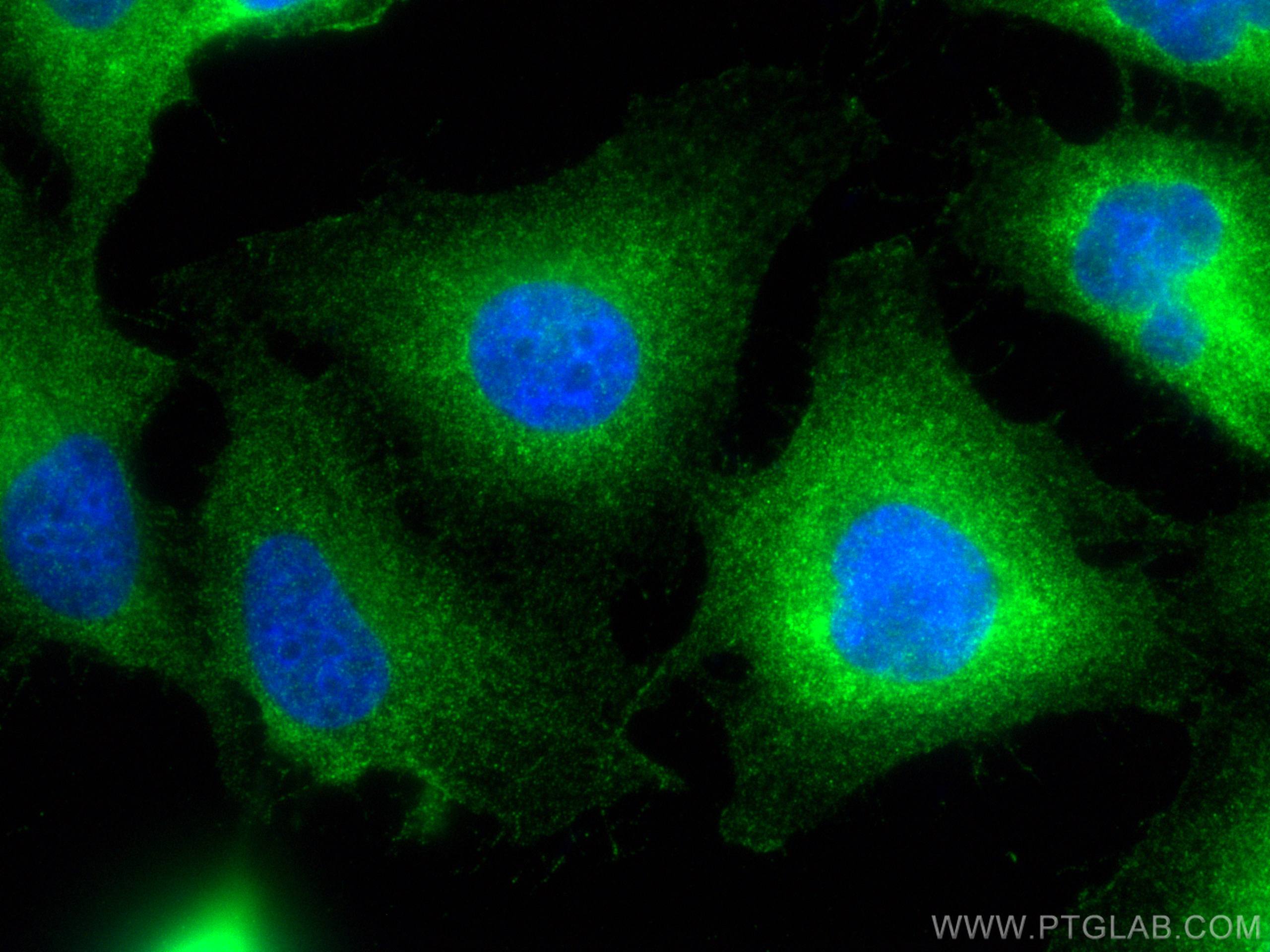Tested Applications
| Positive WB detected in | HCT 116 cells, HUVEC cells |
| Positive IP detected in | HepG2 cells |
| Positive IHC detected in | human liver cancer tissue, mouse liver tissue Note: suggested antigen retrieval with TE buffer pH 9.0; (*) Alternatively, antigen retrieval may be performed with citrate buffer pH 6.0 |
| Positive IF/ICC detected in | HUVEC cells, A431 cells |
Recommended dilution
| Application | Dilution |
|---|---|
| Western Blot (WB) | WB : 1:1000-1:6000 |
| Immunoprecipitation (IP) | IP : 0.5-4.0 ug for 1.0-3.0 mg of total protein lysate |
| Immunohistochemistry (IHC) | IHC : 1:50-1:500 |
| Immunofluorescence (IF)/ICC | IF/ICC : 1:50-1:500 |
| It is recommended that this reagent should be titrated in each testing system to obtain optimal results. | |
| Sample-dependent, Check data in validation data gallery. | |
Published Applications
| KD/KO | See 7 publications below |
| WB | See 13 publications below |
| IHC | See 5 publications below |
| IF | See 5 publications below |
Product Information
14929-1-AP targets POFUT1 in WB, IHC, IF/ICC, IP, ELISA applications and shows reactivity with human, mouse, rat samples.
| Tested Reactivity | human, mouse, rat |
| Cited Reactivity | human, mouse |
| Host / Isotype | Rabbit / IgG |
| Class | Polyclonal |
| Type | Antibody |
| Immunogen |
CatNo: Ag6710 Product name: Recombinant human POFUT1 protein Source: e coli.-derived, PGEX-4T Tag: GST Domain: 1-182 aa of BC000582 Sequence: MGAAAWARPLSVSFLLLLLPLPGMPAGSWDPAGYLLYCPCMGRFGNQADHFLGSLAFAKLLNRTLAVPPWIEYQHHKPPFTNLHVSYQKYFKLEPLQAYHRVISLEDFMEKLAPTHWPPEKRVAYCFEVAAQRSPDKKTCPMKEGNPFGPFWDQFHVSFNKSELFTGISFSASYREQWSQRR Predict reactive species |
| Full Name | protein O-fucosyltransferase 1 |
| Calculated Molecular Weight | 44 kDa |
| Observed Molecular Weight | 44 kDa |
| GenBank Accession Number | BC000582 |
| Gene Symbol | POFUT1 |
| Gene ID (NCBI) | 23509 |
| RRID | AB_2166123 |
| Conjugate | Unconjugated |
| Form | Liquid |
| Purification Method | Antigen affinity purification |
| UNIPROT ID | Q9H488 |
| Storage Buffer | PBS with 0.02% sodium azide and 50% glycerol, pH 7.3. |
| Storage Conditions | Store at -20°C. Stable for one year after shipment. Aliquoting is unnecessary for -20oC storage. 20ul sizes contain 0.1% BSA. |
Background Information
POFUT1 (protein O-fucosyltransferase 1), also known as GDP-fucose protein O-fucosyltransferase, is an enzyme that catalyzes the reaction that attaches fucose through an O-glycosidic linkage to a conserved serine or threonine residue in EGF domains and plays a crucial role in Notch signaling.
Protocols
| Product Specific Protocols | |
|---|---|
| IHC protocol for POFUT1 antibody 14929-1-AP | Download protocol |
| IP protocol for POFUT1 antibody 14929-1-AP | Download protocol |
| WB protocol for POFUT1 antibody 14929-1-AP | Download protocol |
| IF protocol for POFUT1 antibody 14929-1-AP | Download protocol |
| Standard Protocols | |
|---|---|
| Click here to view our Standard Protocols |
Publications
| Species | Application | Title |
|---|---|---|
Cell In vivo CRISPR screening reveals nutrient signaling processes underpinning CD8+ T cell fate decisions.
| ||
EBioMedicine PLAGL2 and POFUT1 are regulated by an evolutionarily conserved bidirectional promoter and are collaboratively involved in colorectal cancer by maintaining stemness.
| ||
EMBO Mol Med A spoonful of L-fucose-an efficient therapy for GFUS-CDG, a new glycosylation disorder | ||
Cell Death Dis POFUT1 promotes colorectal cancer development through the activation of Notch1 signaling.
| ||
Cell Death Dis LIF upregulates poFUT1 expression and promotes trophoblast cell migration and invasion at the fetal-maternal interface. | ||
Cell Prolif Epiregulin promotes trophoblast epithelial-mesenchymal transition through poFUT1 and O-fucosylation by poFUT1 on uPA. |
Reviews
The reviews below have been submitted by verified Proteintech customers who received an incentive for providing their feedback.
FH fei (Verified Customer) (09-04-2025) | This antibody was used for WB, IP, and IF experiments. Overall, the results were good. The weaker signal in WB may be related to the cell type.
|

